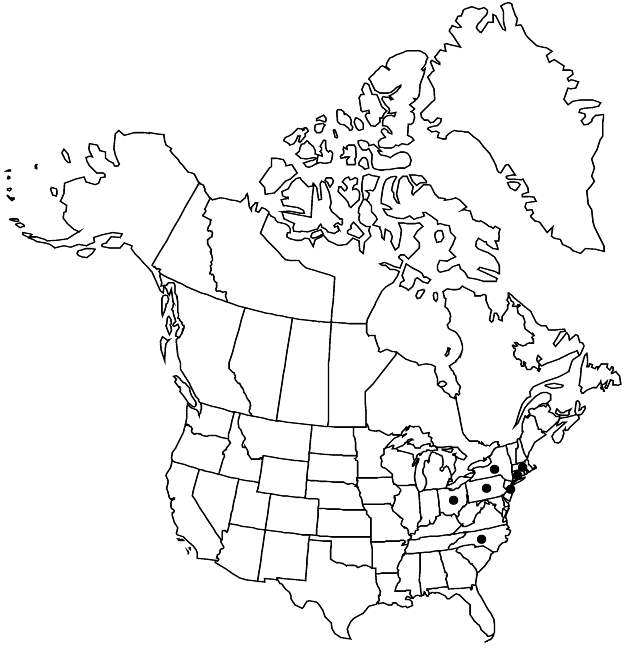Stellaria holostea
Sp. Pl. 1: 422. 1753.
Plants perennial, scrambling to ascending, from slender, creeping rhizomes. Stems branched distally, 4-angled, 15–60 cm, glabrous or hispid-puberulent distally. Leaves sessile; blade narrowly lanceolate, widest near base, 4–8 cm × 2–10 mm, somewhat coriaceous, base round and clasping, margins and abaxial midrib very rough, apex narrowly and sharply acuminate, scabrid, otherwise glabrous, slightly glaucous. Inflorescences terminal, loose, 3–31-flowered cymes; bracts foliaceous, 5–50 mm, margins and abaxial midrib scabrid. Pedicels ascending, 1–60 mm, slender, pubescent. Flowers 20–30 mm diam.; sepals 5, inconspicuously 3-veined, ovatelanceolate, 6–8 mm, margins narrow, scarious, apex acute, glabrous; petals 5 (rarely absent), 8–14 mm, longer than sepals, blade apex 2-fid to middle; stamens 10, sometimes fewer by degeneration; styles 3, ascending, ca. 4 mm. Capsules green, subglobose, 5–6 mm, ± equaling sepals, apex obtuse, opening by 3 valves, tardily splitting into 6; carpophore absent. Seeds reddish-brown, reniform, 2–3 mm diam., papillose. 2n = 26 (Europe).
Phenology: Flowering spring.
Habitat: Woodlands, hedgerows
Elevation: 0-500 m
Distribution

Introduced; Conn., Mass., N.J., N.Y., N.C., Ohio, Pa., Eurasia
Discussion
Stellaria holostea is sometimes cultivated and occasionally naturalizes.
Selected References
None.
Lower Taxa
"widest" is not a number.